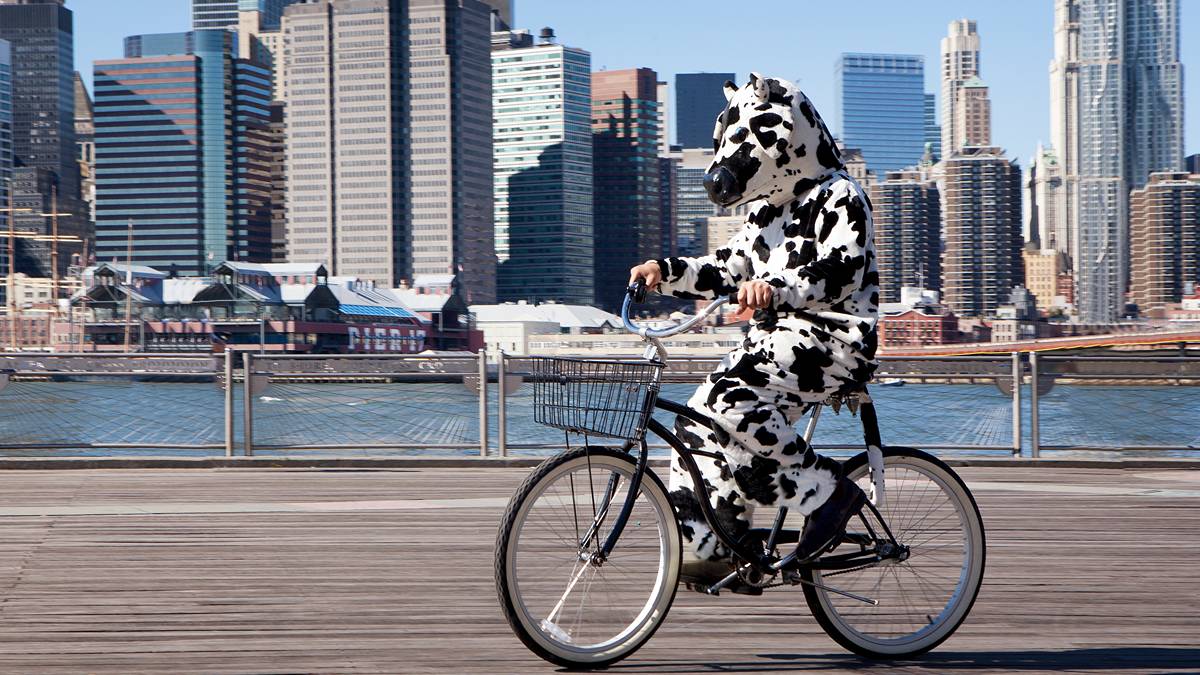The Big Picture: With workers trickling back to the office, should investors follow?

It's time to go back to the office, but still elevated vacancy rates mean workers shouldn't feel herded in like cattle. Pic via Getty
- Sydney office valuations have held up “remarkably well”, while Melbourne is lagging but recovering
- In ‘Brizvegas’, analysts expect a supply squeeze in the lead-up to the Olympics
- The RBA is almost certain to cut rates next month, thus supporting valuations
Dubbed as one of the world’s most hated asset classes during and after the pandemic, office property is emerging from its funk amid improving valuations and expectations of an acute supply deficit in Sydney and Brisbane post 2026.
At the same time, astute buyers can acquire desirable properties on valuations they could only have dreamed about five years ago.
Market strategist Jason Coggins* says there’s little significant premium-grade new supply in the Sydney market, while the supply squeeze is likely to be even more evident in Brisbane in the lead-up to the Olympics.
Will office follow retail?
Coggins reckons the office sector is going through the same phase as retail assets five years ago, when mall owners sold on “aggressively” high capitalisation (cap) rates that did not reflect replacement costs.
Cap rates are the net operating rents derived from a property, as a percentage of the price paid for the asset.
The higher the cap rate, the lower the price.
“The country is not built a major mall in more than 20 years and the population has gone from 20 to 28 million,” Coggins says.
“You will see that in some degree in office.”
Macquarie Equities points to a gradual office recovery in the June quarter, with positive net absorption across all major cities.
Net absorption means more space was taken up than vacated.
Sydney performed most strongly during the quarter, but Melbourne improved the most over the last 12 months.
“We continue to advocate for a rotation into office based upon an anticipated gradual recovery in income fundamentals and stocks trading at deep discounts to book value,” the firm says.
Sydney holds up “remarkably well”
Sydney has maintained its status as the most robust and liquid office market, especially in the CBD premium sub sector.
For the record, that’s the area within Circular Quay, Martin Place and George and Macquarie Streets.
Coggins says transaction activity is increasing amid ongoing interest from Japanese, South Korean and Singaporean institutions.
“Sydney space trades at a premium because it’s a highly deep and liquid market,” Coggins says. “It’s hard to get a good cheap deal.”
He says when the Sydney Metro rail project started a decade ago, dozens of B grade buildings were razed.
In the meantime, global companies demand A-grade space for their HQs and this space continues to trade on low cap rates.
Coggins says A grade tenants are moving from locations such as North Sydney and Macquarie Park, into the CBD.
Tenants are likely to crave premium space, with little visibility on new CBD projects beyond existing builds such as 55 Pitt Street and Charter Hall’s Chifley stage two south tower.
Two other key projects – 33 Alfred St and 121 Castlereagh St – have completed.
… while Melbourne lags
Down south, Melbourne’s recovery still lags by about 12 months, with stubbornly high – but improving – vacancies.
Agent Cushman & Wakefield says net effective premium rents rose 5.1% in the June quarter, but incentives (discounts and rent-free periods) remain at high levels.
Coggins says the Melbourne downturn is skewed to out-of-favour ‘campus style’ developments in the Docklands precinct.
Campus style doesn’t refer to student digs, but low-rise buildings for a single corporate tenant and large amount of open space.
Examples include Medibank headquarters and the National Australia Bank’s Docklands office.
Coggins says high incentives are a lagging indicator rather than a sign of things to come.
… and ‘Brizvegas’ is set to boom again
Cushman & Wakefield reports steady demand for Brisbane CBD office space in the June quarter, building on a strong December 2024 half.
Once again, tenants favour premium and A-grade sectors, although net absorption moderated to -12,646 square metres.
“With several pre-committed supply additions due later in 2025, tenant movement is expected to lift in [the current half], particularly among larger occupiers seeking upgraded space,” the firm says.
“Overall, demand remains evident for high-quality and well-located assets in Brisbane’s office market.”
This is “supported by rising effective rents and tightening vacancies”.
Buyers can still snare good deals, especially relative to the Sydney market.
In a bellwether transaction, Sentinel Property Group acquired Green Square South in Fortitude Valley, for $132 million.
The vendor was South Korea’s Teachers Pension Fund.
Tenanted by the Brisbane City Council – but only until 2027 – the property sold on a stratospheric 14% yield.
“Buyers in Brisbane get good prices because it is harder to sell assets and that extends to B-grade buildings, which are really hard to sell,” Coggins says.
But as the Olympics loom, Coggins expects Brisbane to experience acute shortages of both office and retail property.
The REIT way to invest
Most retail investors access commercial property is by way of listed real estate investment trusts (REITs).
These ranging in size from the $70 billion Goodman Group (ASX:GMG) (global industrial assets) to niche plays in convenience, rural assets, childcare and self-storage.
The REITs most heavily exposed to office sector are Dexus (ASX:DXS) , Mirvac (ASX:MGR) , GPT Group (ASX:GPT) and the pure play Centuria Office REIT (ASX:COF) .
While valuations have improved, broker Morgans says office REITs trade at an average 24% to the value of their net tangible assts.
Centuria Office trades at a 34% discount and the shares have lost 40% of their value since the pandemic’s early days.
Grounds for optimism
The Reserve Bank of Australia held rates steady last month. But last week’s surprisingly high unemployment number points to a cut at next month’s meet.
“The forward yield curve has another two to three rate cuts prices in over six to 12 months and this will feed directly into valuations,” Coggins says.
“It also means the debt attached to these assets becomes cheaper and also supports valuations.”
Property is also a bond ‘proxy’, in that investors will compare rental income yields with those from risk-free government bonds. Thus, lower bond yields make property look more attractive – and the reverse applies.
The office story has a way to play out.
“While the office sector has seen improving fundamentals in recent months, high incentives and capital expenditure remain a headwind to net cashflow generation,” Citi says.
“We remain cautious on the subsector relative to retail, industrial, self-storage, residential and data centres.”
Building optimism
Coggins adds that as with Adelaide, Brisbane has higher occupancies because workers are less likely to work remotely.
In Sydney and Melbourne, the CBD workforce is skewed to professions more likely work independently and remotely.
“Having said that, they tend to be prominent firms who want to showcase themselves in a premium location.”
The working-from-home impact aside, Coggins notes that Australia is one of the urbanised countries in the world.
“People still need office space,” he says.
“In a world of geopolitical tension, investors typically view Australia as a safe haven.”
*Jason Coggins holds multiple high-level advisory roles at leading fund managers, advice firms and family offices.
The views, information, or opinions expressed in the interviews in this article are solely those of the interviewee and do not represent the views of Stockhead.
Stockhead does not provide, endorse or otherwise assume responsibility for any financial advice contained in this article.
Related Topics
UNLOCK INSIGHTS
Discover the untold stories of emerging ASX stocks.
Daily news and expert analysis, it's free to subscribe.
By proceeding, you confirm you understand that we handle personal information in accordance with our Privacy Policy.








